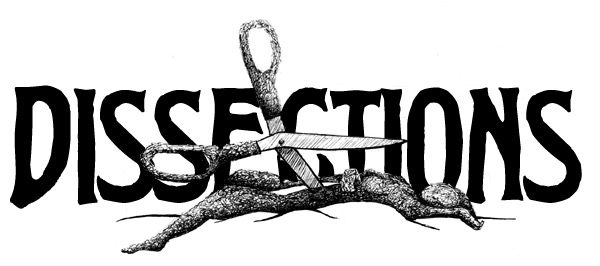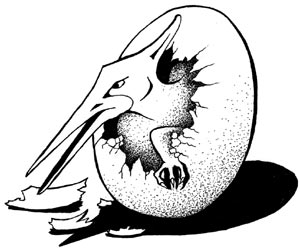[an error occurred while processing this directive]


Book Review
The Monster Theory Reader
ed. Jeffrey Andrew Weinstock
576 pages, University of Minnesota Press
ISBN 978-1-5179-0525-5
Review by Gina Wisker
We have all been waiting for this and now it is here, The Monster Theory Reader, companion to Jeffrey Weinstock’s equally powerful Monster collection from 2014 (The Ashgate Encyclopedia of Literary and Cinematic Monsters). The earlier book gave us definitions and examples of the monsters themselves while this layers in the foundational and the contemporary developments of the theory we need to manage those monsters.
The essential theoretical underpinnings are there at the start of the book, including the whole of Jeffrey Jerome Cohen’s essay ‘Monster Theory (seven theses)’, and Jeffrey Weinstock’s own introductory ‘A Genealogy of Monster Theory’, which sets the scene and includes a very thoughtful deep range of engagement with monster scholarship, Sigmund Freud’s ‘The Uncanny’, and then the developments enabled in the next generation of foundational texts: Julia Kristeva, Barbara Creed, Donna Haraway, Jack Halberstam and Stephen T. Asma and coming more up to date with Patricia McCormack and others.
There are four parts: The Monster Theory Tool Box; Monsterising Difference; Monsters and Culture; and the Promises of Monsters. Jeffrey Jerome Cohen, Freud, Kristeva and others explain how we construct and project monsters based on fears of the Other, the foreigner, the elements of self about which we are or should be concerned, exposing the folly of complacencies around ‘normality’ and the everyday. The familiar monster figures are explored and their origins, metaphorical power, uses and examples discussed.
Jeffrey Weinstock clarifies that monster theory, like monsters, is transnational and transdisciplinary, all cultures have their monsters and ‘what monsters are, where they come from, what they mean, and the cultural work they do are questions that have preoccupied philosophers, theologians, psychologies, physicians, and cultural critics.’ (p. 1). He discusses Asa Mittman’s theories that the monster is that which ‘unsettles or challenges someone’s established cognitive categories and interpretive strategies’ (p. 3), ‘creates [a] sense of vertigo that calls into question … epistemological worldview’, and the Freudian version of the uncanny – where everything’s destabilised and undermined and questioned. The bases of understanding, comprehending, are also questioned simultaneously in Freud through defamiliarisation – a condition where you think you recognise and know, but it is actually terrifying and disturbingly different. For me this all speaks to the dark heart of Gothic horror, an essential philosophical position of realising the relativity of epistemology and ontology, labels, categories, language, any form of understanding and communication.
Previously unavailable in print, Masahiro Mori’s ‘The Uncanny Valley’ considers robotics, and beyond that AI, the borders of what we are comfortable with in the world of the artificial, whether replacement limbs, humanoid (or pet-like) robots, or puppets, and in diagrammatic form defines an uncanny valley where discomfort, disgust, dis-ease result when the borderlines are insecure between the semblance of technologically constructed human and the born human. So monsters include, but philosophically are far from, those born different (from what??) or just the lumbering Frankenstein’s monster of the early films (not Mary Shelley’s wonderful gender, politics, science, theology and race-aware novel), i.e., all extra-large ill-fitting body parts and technology implants of screws and bits and pieces. Instead, they appear in any shape, the horror figures of vampires, zombies and so on but also the monsters of xenophobic, misogynistic, homophobic fears. Elizabeth Grosz’s work ‘Intolerable Ambiguity: Freaks as/at the limit’ here defines the ‘intolerable ambiguity’ of the monster, where ‘the freak confirms the viewer as bounded, conforming to a ‘proper’ social category. The viewer’s horror lies in the recognition that this monstrous being is at the heart of his or her own identity’ (p. 284), which leads to attempts to find a category to understand, assimilate, continue or to a drive to eradicate it. Weinstock mentions Noel Carroll’s ‘The Philosophy of Horror’, 1990, emphasising fears, disgust at ‘categorical ambiguity’, while Cohen identifies ‘ontological liminality’ (p.70), both indicating the troublesomeness of the indefinable and ambiguous and a desire to make sense of the world. Monsters, as Mittman suggests, ‘frustrate our epistemological strategies for making any sense of the world’ (p. 19).
In his earlier work on ghosts, Jeffrey Weinstock indicated that we need our ghosts, they are our own products and dark reminders. Clearly, we also need and so construct our own monsters, their difference a projection of our own terrors at our difference, their solidity and presence a reminder of our own uneasy, ill-defined, vulnerable selves and a projection of the blurred boundaries, the indefinable qualities of our own minds and bodies.
Cohen and others, including Kristeva, clarify that disgust
and fear of the monster is really desire, and although we might (try
to) destroy these chaos bringers, we envy their freedom. ‘Sublime
despair’ is also involved, so monsters are a threat and a promise
which is itself scary. With this as a theoretical basis, disgust and
desire, ontological and epistemological insecurities entwined, it is
not surprising that monsters will be concerned with sex, the body, naming,
safety, health.
The book says less about health, but contagions are also defined as
monstrous, which is a topical reading. In the COVID-19 moment, this
particularly strange moment of a global pandemic (March, 2020) The
Monster Theory Reader is a distressingly terribly timely book.
It feels as though we are living with a monster inside and all around
us, that inner disgust, the alienation and the invasion that the monster
figure often represents, is on our streets and in our bodies. One hopes
as ever that both theorising and facing the monster will be helpful
at least for the (dark?) soul.
Home
